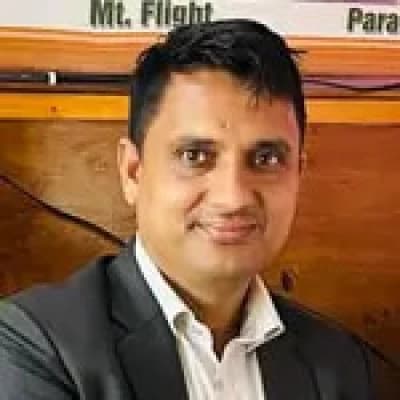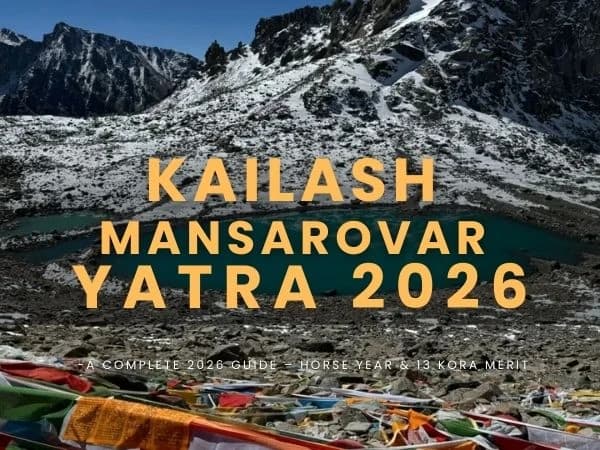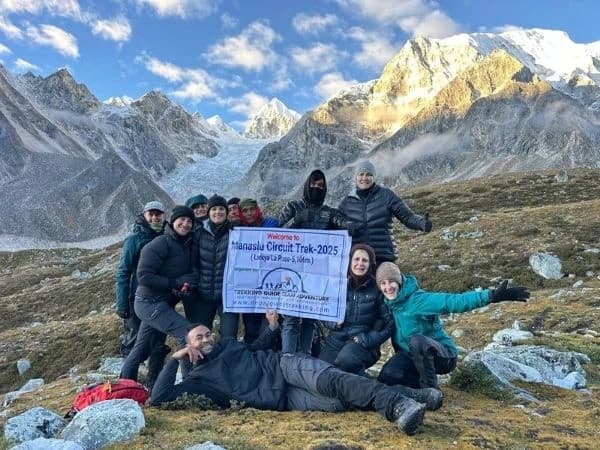Top 5 Rafting Destination in Nepal
1) Trishuli River Rafting: Perfect rafting for beginners:

Trishuli River is the most popular rafting destination among travellers and locals due to its easy accessibility, impressive gorges, easy sections and exciting rapids. The Trishuli river originates from Tibet, and the source of water in the river is the holy lake Gosainkunda. The starting point of the Trishuli River can be reached by driving 3-3.5 hours west of Kathmandu. So, you can either plan the rafting trip with your Pokhara or Chitwan trip or add it to your list while in Kathmandu. The Trishuli River is also called the classic river and is the best place for first-time rafting. The Trishuli River has Grades III to IV+.
✔ Check here for Trishuli River Rafting Package
2) Upper Seti River Rafting: Warm water and beautiful views:

The Seti River located in Pokhara originates from the base of the Annapurna ranges and joins the Trishuli River near the Devghat area. The starting point of the Upper Seti river rafting is Hemja, located 30 min drive from the lakeside. During the Upper Seti River rafting, you will cover an 8km distance and end your rafting at Dam. Unlike Trishuli and Kaligandaki river rafting, the upper Seti River Rafting can be completed in half day but offers the same amount of rapids and thrills as any other rafting destination. The Seti river rafting is known for being warm and beautiful as the water is comparatively warm, and the views of the Himalayas and beautiful Pokhara Valley makes the rafting trip even more worthwhile. The Seti River rapids grades between III to IV.
3) Bhote Koshi River Rafting: Intense rapids and beautiful beach camps:

The Bhote Koshi River originates from the glaciers of Shisa Pangama in Tibet and is the main branch of the Sunkoshi River. The steep stream, with continuous and challenging rapids, makes the Bhote Koshi River ideal for rafting and kayaking. The starting point of Bhote Koshi rafting, Khadichour is located 80 Km from Kathmandu. The Bhote Koshi river rafting is a two-day program where you will raft for nearly 10 Km from Kadichour to Sukute Beach and then from Baseri to lamoshanghu Dam. During the rafting, you can enjoy the views of lush forests, villages, and waterfalls. The rapids of the Bhote Koshi River grade between III to IV+.
✔ Check here for Bhote Koshi river Rafting
4) Kali Gandaki River Rafting: Adventurous Rafting:

River Kali Gandaki is named after the goddess of destruction, Kali. The river originates from the Tibetan plateau, plunging to the plains from the base of the Dhaulagiri and Annapurna ranges, and carving one of the deepest canyons in the world. The Kali Gandaki River rafting is a 3-day program and starts from Maldhunga located around 3 hours drive from Pokhara. On the first day of the rafting trip, you will raft till Modi Khola and continue to Purti Ghat the next day, and the trip ends after arriving at Mirmi. The exciting rapids, narrow and deep gorges, spectacular mountain views, villages, lush forests, and white sandy beach camps make Kali Gandaki River one of Nepal's best places for rafting. The rapids of Kali Gandaki River range from III to IV.
✔ Check here for Kali Gandaki Rafting
5) Marshyangdi River Rafting: The Raging River:

Marshyangdi River also known as the raging River originates from the Annapurna range. The Marshyangdi river rafting is a 3-day program that offers the most intense and exciting rapids in the continuous crystal clear whitewater. The starting point of the rafting is Bhulbule, where you will raft in the raging River, along the wild vegetation to Paundi and then to Turture to end your rafting trip. The steep downfalls, grade IV to V technical rapids, turbulences, sharp bends, and the views of the Himalayas makes Marshyangdi river rafting one of the finest destinations for adventurous river rafting in Nepal.
Best Season for Rafting in Nepal:
The major requirement of rafting is a continuously flowing river. The river of Nepal flows all year round. Hence, rafting can be done in any season in Nepal. However, there is a difference in the thrill rafters experience while rafting in different seasons.
- Rafting from September to December (Autumn) means you can enjoy the rapids and lovely weather after the monsoon season. At this time of the year, the water level increases, offering a thrilling experience to the rafters.
- Rafting in Spring/Pre-monsoon (March to early June) is easy as the water levels are fairly low, but the weather is pleasant.
- Rafting in Winter (late December to February) means you have to deal with shorter days and cold weather that may lead to Hypothermia.
- Rafting during Monsoon (June to August), the water flow is ten times more than the normal water level. So rafting can be quite dangerous at this time.
Rafting Cost in Nepal:
The cost of rafting in Nepal depends on various factors including the destination you choose and the days you are willing to raft. Below-mentioned are the cost for different rafting destinations for Nepalese and foreigners.
Things to Pack for White Water Rafting in Nepal
- Long sleeve shirt/Tshirt
- Lightweight pants/shorts
- Waterproof jacket
- Swimwear
- Sandals
- Sun hat
- Polarized sunglasses with retainer strap
- Wet bags
- Sunscreen
- Water bottle
- An extra change of clothes
Conclusion:
Rafting in Nepal is one of the best adventurous activities for thrill seekers, which leads them into the tranquil landscape far from the crowded cities. Today, with the establishment of luxurious beach site camps and resorts along the rafting destination, visitors can enjoy a cosy stay, enjoy the views, play games, and do rafting photography with their loved ones. While being in the moment and enjoying your rafting trip is the goal, being safe is also crucial. Hence, make sure to follow rafting safety rules and have fun.
Most Common Asked Questions on River Rafting in Nepal:
1. Which season is best for rafting in Nepal?
✔ Although rafting can be done throughout the year, the best season for rafting in Nepal is Autumn (September to December) and Spring (March to May). During the monsoon (June to August), the water level rises in the river, making it unsafe for rafting. And in winter, the cold water may hold you back from trying rafting in Nepal.
2. What is the highest rafting level in Nepal?
✔ The highest rafting level is class VI, known to be unrunnable. However, grades III to V are best suited for rafting with technical, exciting huge rapids.
3. What equipment is required for rafting in Nepal?
✔ The equipment required by rafters includes life jacket, safety helmets, and a paddle which are provided by the rafting companies.
4. What clothing is required for rafting in Nepal?
✔ Since you will be on the water for a very long time, it is best to wear lightweight clothes that dry quickly. Clothing like shorts, t-shirts, full sleeves t-shirts, a slipper, and swimwear will be sufficient for the rafting trip. However, we also recommend you use SPF sunscreen to save your skin from sunburn.
5. What is the age limit for rafting in Nepal?
✔ The minimum age is five years, but it depends on factors like their swimming ability, strength, water current, and the season you are planning for your family rafting tour. As long as the child is accompanied by parents with all safety gear, a child as young as 5 years can be a part of the rafting.










